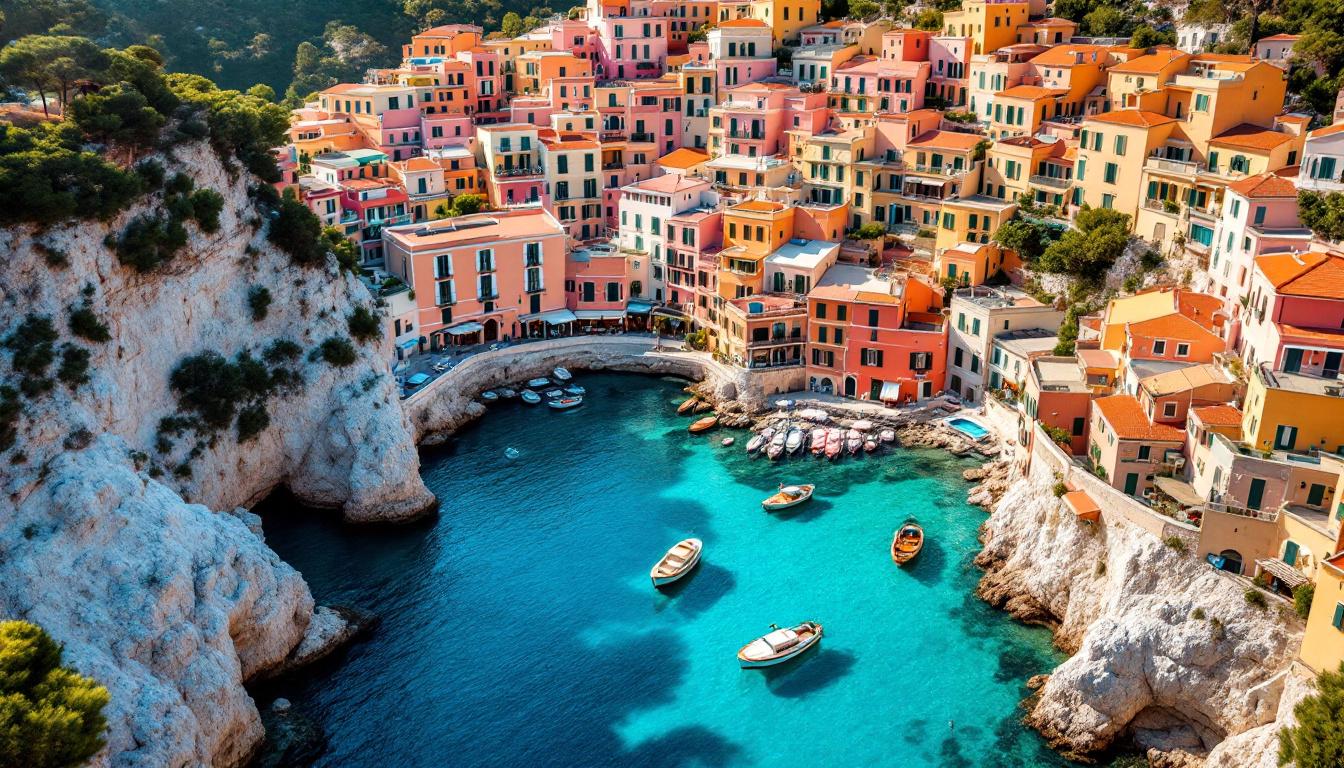Tucked between Marseille’s urban sprawl and the glittering excess of the Côte d’Azur, Cassis delivers everything travelers love about Italy’s famous Cinque Terre—colorful houses cascading toward azure waters, dramatic clifftop views, authentic fishing culture—but at a fraction of the cost and crowds.
This Mediterranean gem costs roughly 30% less than its Italian counterpart while offering something Cinque Terre lost decades ago: genuine local life untouched by mass tourism. Where Cinque Terre’s historic villages now overflow with tour groups and English-language menus, Cassis maintains its authentic Provençal soul.
The secret weapon? Protected calanques—dramatic limestone inlets accessible only by boat or hiking trails—that create natural barriers against overtourism while preserving some of Europe’s most pristine coastal wilderness.
The visual similarity that stops travelers cold
Cliff-hugging architecture with Mediterranean magic
Like Cinque Terre’s famous Monterosso and Vernazza, Cassis unfolds as a amphitheater of pastel-painted houses climbing from a protected harbor toward limestone cliffs. The difference? Cassis combines this postcard perfection with direct access to the otherworldly calanques—white stone fjords that make Norway’s coastline look ordinary.
Harbor authenticity without the tourist theater
While Cinque Terre’s fishing boats now primarily serve photo opportunities, Cassis’s port still buzzes with genuine maritime activity. Local fishermen repair nets at dawn, selling their catch directly from weathered boats rather than overpriced tourist restaurants charging €35 for basic seafood pasta.
The cost advantage that changes everything
Accommodation savings without sacrificing charm
A charming waterfront room in Cassis averages €85-120 per night compared to Cinque Terre’s €150-200 for similar accommodations. Local auberges and family-run hotels maintain authentic Provençal character while delivering genuine hospitality—not the efficient-but-impersonal service that mass tourism breeds.
Restaurant prices that respect local income
Traditional bouillabaisse costs €28-35 in Cassis versus €45-60 in Cinque Terre, because local restaurants still serve locals. The difference shows—portions reflect genuine hunger rather than tourist expectations, ingredients come from regional suppliers, and wine lists feature exceptional local Cassis blanc starting at €18 per bottle.
Protected calanques create natural exclusivity
Environmental limits that preserve paradise
Cassis belongs to Calanques National Park, France’s newest national park, which strictly limits visitor numbers through parking restrictions and seasonal boat quotas. This protection creates an experience Cinque Terre abandoned—the feeling of discovering untouched Mediterranean wilderness just minutes from civilization.
Access adventures that reward the curious
The most spectacular calanques—En-Vau, Port-Pin, Sugiton—require 45-90 minute hikes or boat excursions that naturally filter out casual tourists. Unlike Cinque Terre’s crowded coastal trail, these paths lead to pristine beaches where swimming feels like a private luxury rather than a competitive sport.
Cultural authenticity that tourism hasn’t erased
Provençal traditions in daily practice
Cassis’s morning market buzzes with locals buying ingredients for family meals, not tourists hunting Instagram props. Vendors speak rapid French, prices remain reasonable, and seasonal rhythms—lavender in summer, olive harvests in autumn—still dictate community life rather than tourist seasons.
Wine culture that connects land to glass
The Cassis AOC appellation produces some of France’s most distinctive white wines from vines growing in limestone soil just behind the village. Local vignerons offer tastings in family cellars where wine knowledge passes through generations—not corporate tasting rooms designed for tourist throughput.
Practical access without the complications
Transportation that actually works
Direct buses from Marseille take 45 minutes and cost €2.10, while Cassis train station connects to major French cities without the reservation headaches that plague Cinque Terre’s overtaxed rail system. Parking exists for those driving the stunning coastal route from Nice.
When to visit for maximum authenticity
May through June and September through October offer perfect weather with significantly fewer visitors. August brings crowds but also evening festivals celebrating local maritime traditions—authentic cultural experiences rather than manufactured tourist entertainment.
Cassis proves that Mediterranean magic doesn’t require Italian prices or crowds. This protected corner of Provence delivers everything travelers seek in coastal France—dramatic beauty, authentic culture, exceptional food and wine—while respecting both visitors and the local community that calls it home.
The calanques await those ready to discover France’s best-kept coastal secret, where every sunset still feels like a personal gift rather than a scheduled tourist attraction.
